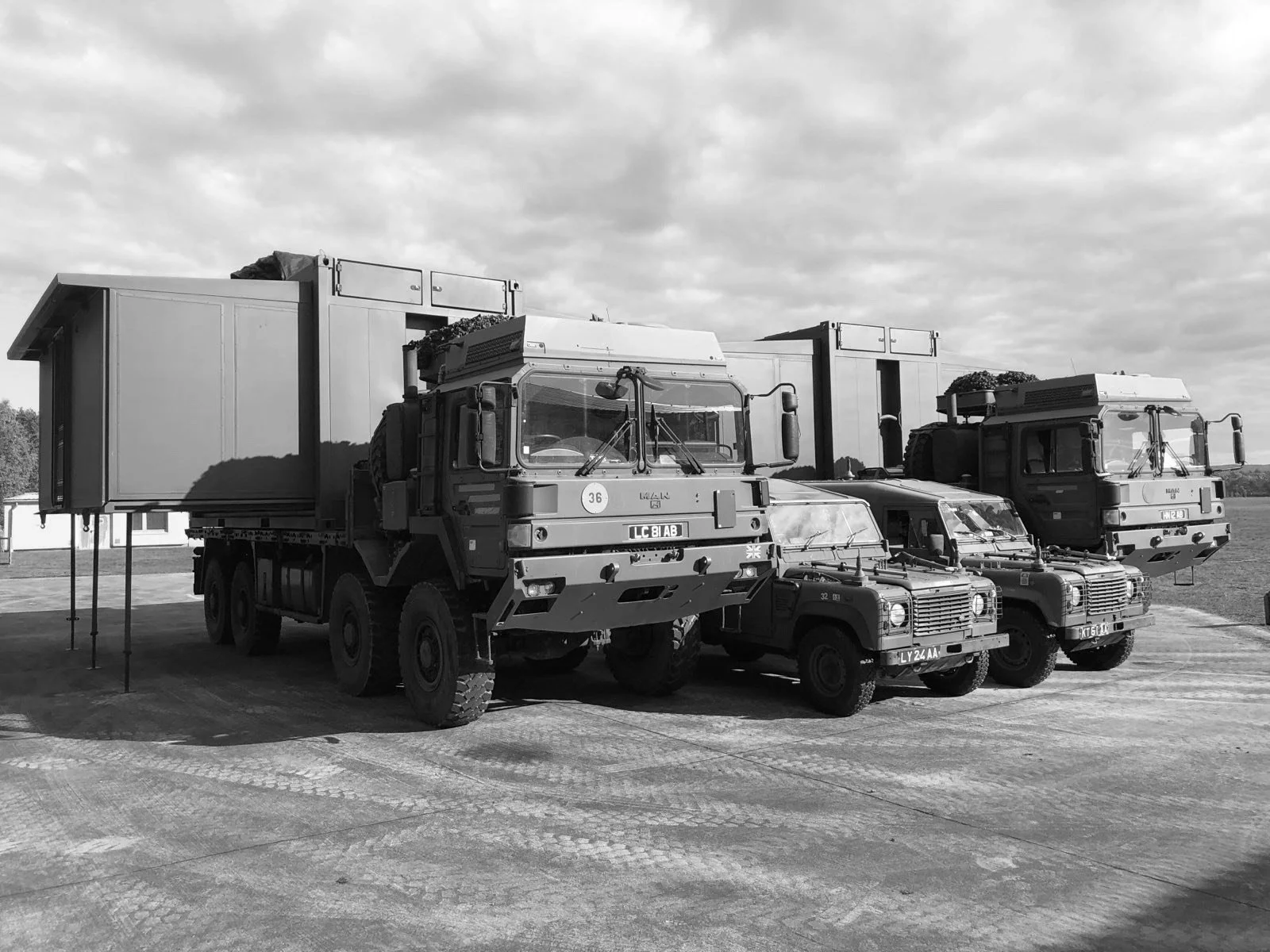Project Lelantos
Objectives
This was an experimentation project with aims to combine best of breed technologies into a cohesive next-generation, agile, more survivable, and secure Staff Working Environment (SWE) for UK Defence, supporting deployable headquarters across various operational conditions.
Design and Prototype a Scalable SWE: Develop an agile Command Post (CP) model using cutting-edge commercial technology to support mobility, survivability, and secure communications.
Enable Digital Transformation: Support the digitisation of UK Joint Forces through integrated shelters, power systems, and communications (CIS).
Use Agile Development Methods: Apply Lean-Agile, DevSecOps, and iterative testing to rapidly build, evaluate, and refine Minimum Viable Products (MVPs).
Enhance Operational Capability: Improve the ability of deployed HQs to communicate securely, build and move quickly, and remain undetected in high-threat environments.
Integrate Advanced Technology: Leverage wireless technologies (WiFi, 5G, LiFi), cloud-based command tools, and hybrid renewable energy systems.
Promote Sustainability and Efficiency: Reduce energy consumption and logistical burden while increasing resilience through modular and efficient designs.
Support Training and Adoption: Deliver tailored training to ensure user understanding and smooth integration of new technologies.
✅ Core Achievements
Mobile Command Unit (MCU) Proven:
Successfully deployed on multiple exercises.
Achieved setup and takedown times of <30 minutes for Initial Operational Capability (IOC) and <1 hour for Full Operational Capability (FOC). P
Provided integrated shelter, hybrid power, and wireless CIS.
Demonstrated ability to operate silently to reduce detectability (thermal/noise signature).
Enabled rapid, modular HQ deployments with improved survivability via dispersed C2 operations.
Wireless CIS (Command Information System) Success:
100-seat multi-domain wireless CIS solution validated.
Significant reductions in setup time, cabling, equipment needs, and bandwidth usage.
Demonstrated support for VDI-based services across MISSION SECRET and NATO SECRET domains.
Enabled users to access multiclassification services on a single secure terminal, reducing hardware requirements.
Troposcatter Communication Trials:
Validated Beyond Line of Sight (BLOS) communications without relying on satellite infrastructure.
Achieved throughputs of up to 210 Mbps at 45 km; ideal for tactical scenarios.
Demonstrated as a viable communications system as a part of a PACE (Primary, Alternate, Contingent, Emergency) plan
Agile Delivery Model:
The Hybrid Agile approach enabled rapid adjustments to changing requirements without extra costs or delays.
Proved effective during hardware shortages and shifting project goals.
Adopted a fail fast experimentation mentality
🧠 Notable Innovations
Common Operating Picture (COP):
Enabled multi-domain, multi-classification information to be fused on a single device ("Single Pane of Glass").
Energy Efficiency Gains:
Integrated hybrid energy systems resulted in 80% fuel savings over legacy systems thus reducing the logistic burden and improving operational effectiveness.
Significant Support Personnel Reduction:
Reduced deployed signallers from 19 to 5 while maintaining operational effectiveness.

